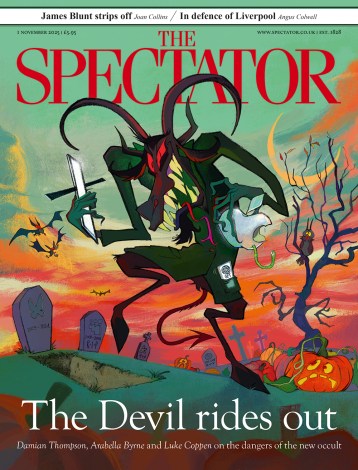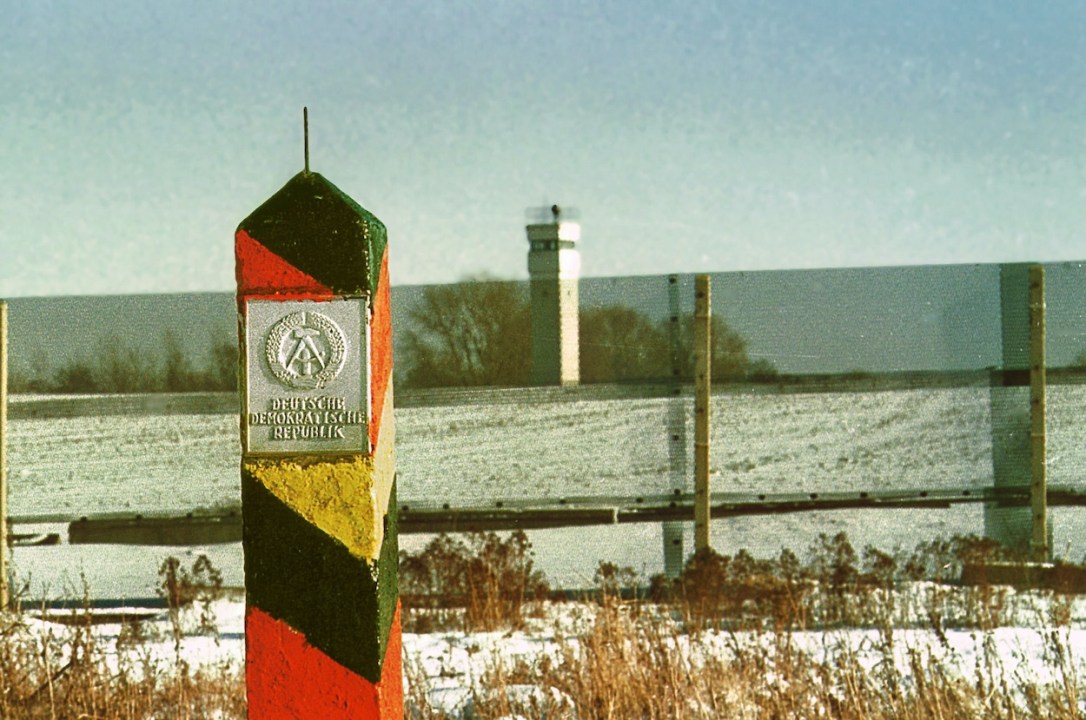As the S-Bahn tram slid along Bernauer Straße, through its windows I could see tourists posing for photos beside the remains of the Berlin Wall. Everyone fixates on the border that cut through West and East Berlin. We forget that Berlin itself was deep in the GDR and that hundreds of kilometres to the west another border ran down the entire seam of West and East Germany.
Observation Post Alpha, the West’s most important military observation post on that border, still stands today as a memorial to the folly of geopolitical games. It was erected to overlook the so-called Fulda Gap, an area of land deemed strategically vital by the Allies. This was where hordes of Russian tanks would charge through in the event of a full-scale attack on the West.
Today the concrete tower stands beside a museum comprising the small US Army camp for personnel who manned the OP. A stone’s throw away stands the East German tower that observed it back. Both towers are surrounded by various remnants of where the border wall, its barbed wire and mines once lay. There’s even a replica of a dog’s kennel with a stiff-legged model of an Alsatian.
I followed the dog’s gaze and walked down the track used by East German guards to patrol the wall. I passed a group of Bundeswehr soldiers being given a tour and families out for the day. I was also following the section of the Jakobsweg – Germany’s portion of the Camino de Santiago – that follows the ‘Iron Curtain trail’. Soon I was on my own following the footprint of the wall. Suffice to say I began to feel uneasy.
Admittedly, the weather suddenly took a gloomy turn, so perhaps that had something to do with it. Though a study once found that red deer still, a quarter of a century on, don’t cross the border between the Czech Republic and Germany. During the Cold War, the boundary between then Czechoslovakia and West Germany comprised three parallel electrified fences patrolled by heavily armed guards.
The scientists behind the report say the deer’s behaviour appears remarkable because the average life expectancy of a deer is 15 years and so none alive today would have encountered the Cold War barrier. Scientists explain that, for the first year of their lives, fawns typically follow their mothers, developing a pattern in their movements. But I wonder if it’s as simple as that. Bad things happened along these Cold War boundaries – perhaps the deer can sense that. The BBC notes that nearly 500 people were killed attempting to cross the Czechoslovakia-West German border.
There are so-called ‘thin places’ where the gap between reality and the metaphysical is reduced, enabling mystics and saints to contemplate the heavenly. Might that also work in reverse? Perhaps there are malign ‘thin places’, where the divide between the present and the evils of the past is reduced. Either way, I sympathise with the deer. As soon as I broke away from where the border ran, I started to feel better.
The abiding thought was just how absurd it all was – those two observation towers standing as proverbial middle fingers to each other
At another memorial, I looked at old photos showing East German soldiers digging in and strengthening fortifications as a West German guard stood at their elbow watching. Presumably, this was one of the many strange agreements between the opposing sides during the Cold War. The abiding thought was just how absurd it all was – those two observation towers standing as proverbial middle fingers to each other, or perhaps as phallic representations of power and strength.
Even the sight of a Stars and Stripes flying in the museum’s barracks stirred conflicting emotions for this Yankophile. I grew up in West Germany in the 1980s as a dependant of the British Army of the Rhine. America seemed a vision of excitement and dynamism for my family; we often went shopping for American food in the tax-free stores on US military bases. In the 2000s I joined the British army and served in Iraq and Afghanistan. The flag looks very different now with all that came after.
I recently read Angus Hanton’s Vassal State: How America Runs Britain. In it he ‘lays bare the extent to which US corporations own and control Britain’s economy’ as UK leaders kowtow to the ‘whims of our American corporate overlords’. Some Germans don’t accept the current configuration of Germany, seeing it as a US construct – turning them into another vassal state – forced on the Vaterland after losing the second world war. Such individuals are usually depicted as cranks and members of the far right. Perhaps we shouldn’t be so quick to dismiss their logic entirely.
With the inner border wall now gone, Observation Post Alpha looks out on the forested hills of Thüringen. But there is still a spiritual border; West and East Germans remain unable to reconcile with each other. Thüringen is where the AfD broke through in the September 2024 state elections, winning the most votes, the strongest performance by a populist party in postwar Germany. In the 2025 federal election, the AfD became the country’s second-largest party with 152 seats. Things are anything but settled in a country where the walls of consensus increasingly appear to be made of soft balsa wood.








Comments